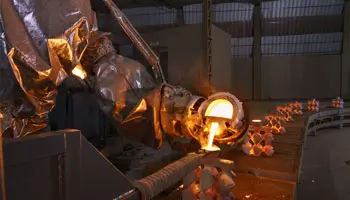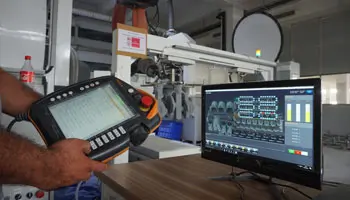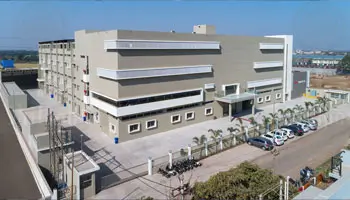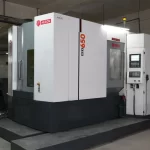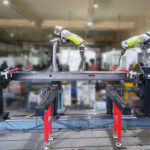What Global OEMs Should Expect from Strategic Metal Components Suppliers

In today’s manufacturing landscape, OEMs operate in an environment defined by rapid product cycles, global competition, supply chain volatility, and rising quality expectations. Choosing the right metal components partner is no longer a transactional decision; it is a strategic move that influences cost, reliability, program stability, and brand reputation.
The best-performing OEMs now rely on suppliers who function as extensions of their engineering, quality, and supply chain teams. They expect partners who understand their pressures, anticipate their needs, and deliver components that are not only precise but program-ready.
Shilpan Steelcast, with its integrated ecosystem of investment casting, precision machining, assembly, quality assurance, and global logistics, has aligned itself with this new standard. Here’s what global OEMs increasingly expect and how mature suppliers rise to the challenge.
End-to-End Capability: From Raw Material to Ready-to-Install Components
Modern OEMs want fewer suppliers, fewer touchpoints, and fewer handoffs. Managing multiple vendors for casting, machining, and assembly increases risk: tolerance stack-up, inconsistent documentation, variable quality, and unpredictable timelines.
A strategic partner should be able to deliver:
- Investment castings engineered to specification
- CNC-machined components from castings, forgings, or bar stock
- Fully assembled sub-systems and ready-to-use components
- Functional testing and validation
- Packaging ready for line-side installation
This integrated model eliminates fragmentation and gives OEMs a clear, accountable workflow. It also shortens supply chains during periods of global uncertainty, making programs more predictable.
Engineering Collaboration: A Key Expectation from OEMs Today
OEMs no longer look for a vendor who “makes the drawing.” They look for a partner who elevates designs, tackles technical challenges, and offers seamless prototype-to-production support.
A top-tier metal components supplier should offer:
- Early DFM guidance to optimize castability, machinability, and cost
- Material recommendations based on performance and environment
- Prototyping support for R&D and pilot builds
- Tooling design and modifications done in-house
- Rapid iterations for design updates without production disruptions
This is the difference between a supplier that merely manufactures and a partner who contributes to the product’s overall success.
Certified Quality Systems: Metal Components Suppliers Must Demonstrate
OEMs, especially in automotive, oil & gas, hydraulics, and precision engineering, need suppliers with robust, internationally recognized quality systems. This extends beyond inspection and into documentation, traceability, process control, and audit readiness.
A strategic supplier should meet certifications such as:
- ISO 9001:2015 – Quality Management
- IATF 16949:2016 – Automotive Quality Management
- PED 2014/68/EU – Pressure Equipment Directive
- AD 2000 – Merkblatt W0 – German Pressure Equipment Code
- ISO 45001 – Occupational Health & Safety
- ISO 14001 – Environmental Management
These certifications demonstrate a supplier’s maturity and ensure that OEMs receive components built within controlled, compliant, globally accepted systems.
Supply Chain Strength: Why OEMs Prefer Single-Source Metal Component Partners
Today, manufacturers need partners who understand both supply chain dynamics and metallurgy.
OEMs expect:
- Regionally located warehouses to reduce delivery time
- JIT, VMI, and KANBAN alignment
- Packaging suited for cross-border shipping
- Backup manufacturing plans for continuity
- Accurate, real-time ERP-driven scheduling
Suppliers who maintain inventory in customer hubs such as Shilpan’s warehouses in Chicago (USA) and Rotterdam (Europe) dramatically reduce the OEM’s risk and working capital burden.
This level of logistical maturity transforms a supplier from a production partner into a global operations ally.
Scalability and Consistency Across Large Programs
OEMs don’t just need one good batch — they need years of dependable performance.
A strategic supplier must offer:
- Large installed manufacturing capacity for both investment castings and CNC machining
- Deep workforce capability with continuous skill development
- Lean production systems that eliminate waste and improve predictability
- Ability to scale output quickly for new model introductions or sudden demand increases
- A culture of continuous improvement backed by data
Predictability, not just capability, is what defines a world-class supplier.
Communication and Transparency: Core Traits of Top Metal Component Suppliers
In high-stakes global programs, communication is part of the product.
OEMs expect suppliers to:
- Offer clear project timelines and proactively flag risks
- Provide consistent reporting on quality, delivery, and performance
- Maintain transparent change management for engineering updates
- Respond quickly to technical inquiries
- Maintain documentation and traceability for every batch
Suppliers who excel in communication earn trust and become long-term, preferred partners.
Strategic Thinking Beyond the PO: What Sets World-Class Suppliers Apart
The next generation of manufacturing partnerships is built on strategic alignment, not transactional quotes.
Forward-thinking suppliers assist with:
- Cost optimization through value engineering
- Lifecycle support for legacy components
- Sustainability objectives and carbon footprint reduction
- Improved manufacturability of future product lines
- Reducing vendor count without increasing risk
This level of thinking positions a supplier not just as a component maker, but as a contributor to the OEM’s long-term competitive advantage.
The Strategic Partner OEMs Want and Deserve

As global competition intensifies, OEMs need suppliers who can deliver far more than parts.
They need partners who bring:
- Integrated manufacturing
- Engineering support
- Certified quality
- Global logistics
- Scalability
- Reliability
Shilpan Steelcast’s evolution toward a single-source manufacturing ecosystem, encompassing investment casting, precision machining, and assembly, aligns with this new global expectation. The company’s scale, certifications, engineering depth, and logistical strength make it not just capable but ready to meet the demands of modern OEM programs.
Looking for a long-term strategic partner you can rely on? Let’s discuss how we can support your next program — from design to delivery.
